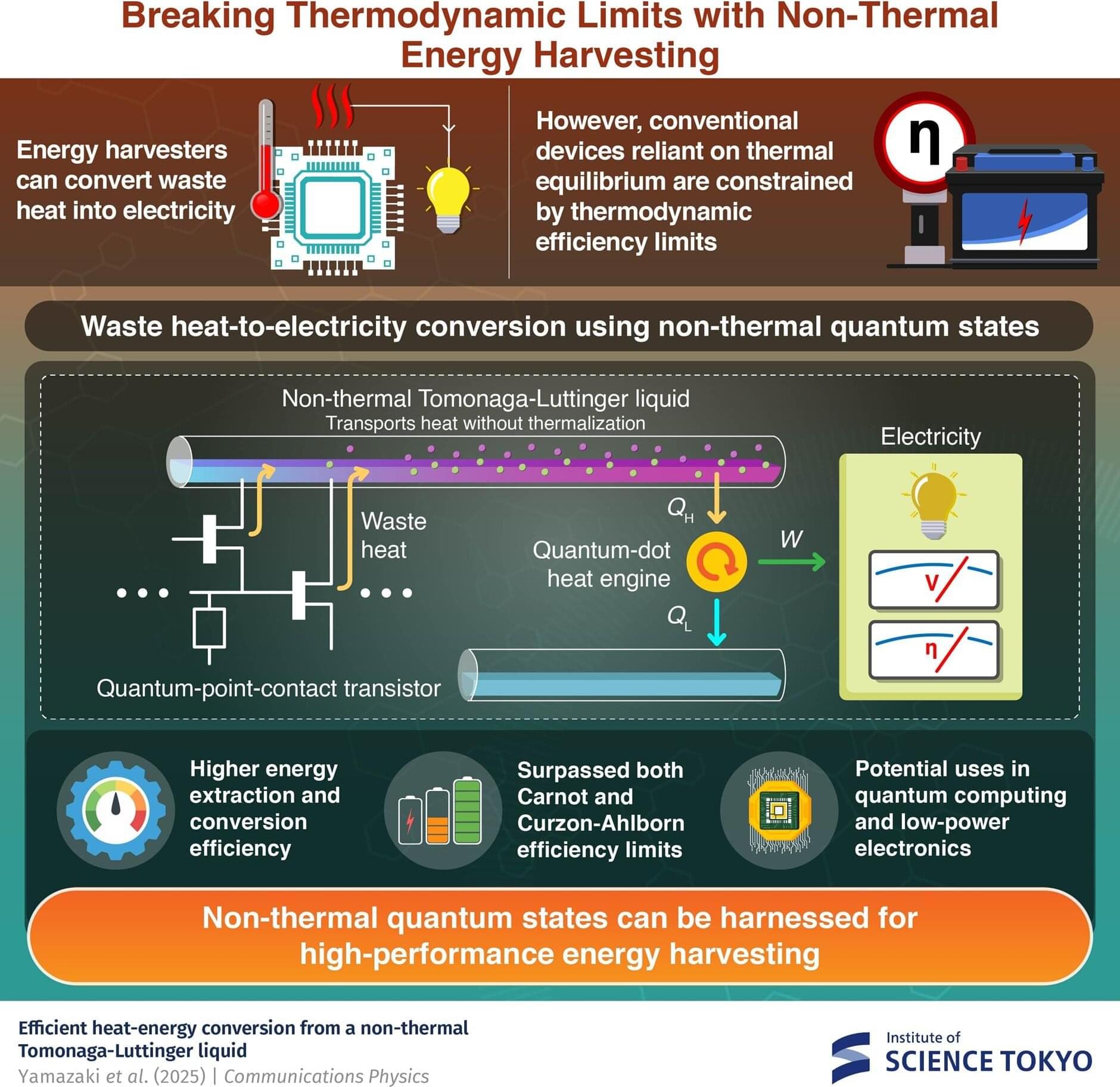Harnessing quantum states that avoid thermalization enables energy harvesters to surpass traditional thermodynamic limits such as Carnot efficiency, report researchers from Japan. The team developed a new approach using a non-thermal Tomonaga-Luttinger liquid to convert waste heat into electricity with higher efficiency than conventional approaches. These findings pave the way for more sustainable low-power electronics and quantum computing.
Energy harvesters, or devices that capture energy from environmental sources, have the potential to make electronics and industrial processes much more efficient. We are surrounded by waste heat, generated everywhere by computers, smartphones, power plants, and factory equipment. Energy-harvesting technologies offer a way to recycle this lost energy into useful electricity, reducing our reliance on other power sources.
However, conventional energy-harvesting methods are constrained by the laws of thermodynamics. In systems that rely on thermal equilibrium, these laws impose fundamental caps on heat conversion efficiency, which describes the ratio of the generated electrical power and the extracted heat from the waste heat, for example, is known as the Carnot efficiency. Such thermodynamic limits, like the Curzon-Ahlborn efficiency, which is the heat conversion efficiency under the condition for obtaining the maximum electric power, have restricted the amount of useful power that can be extracted from waste heat.
